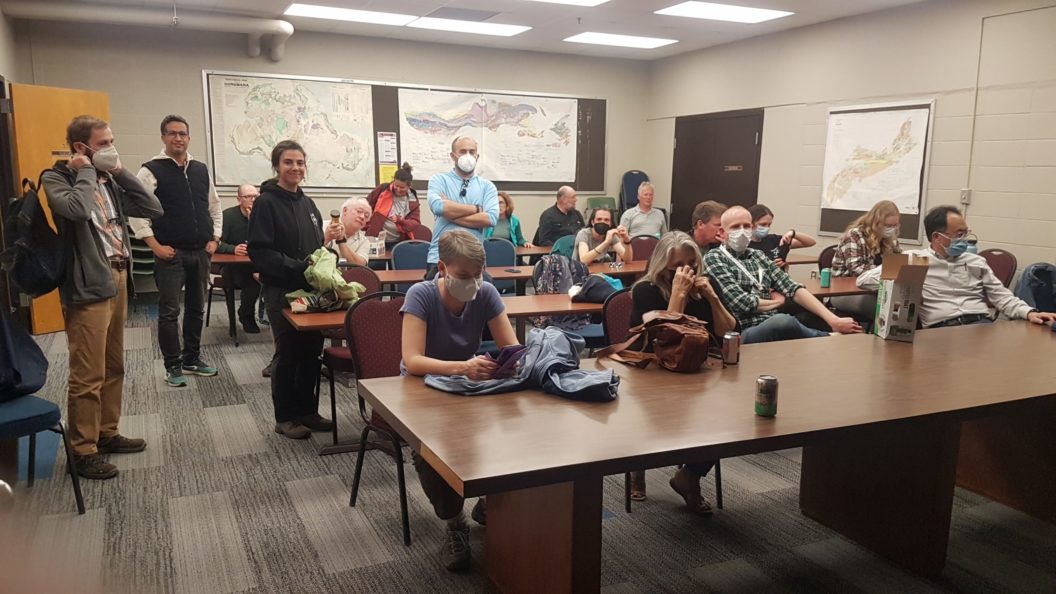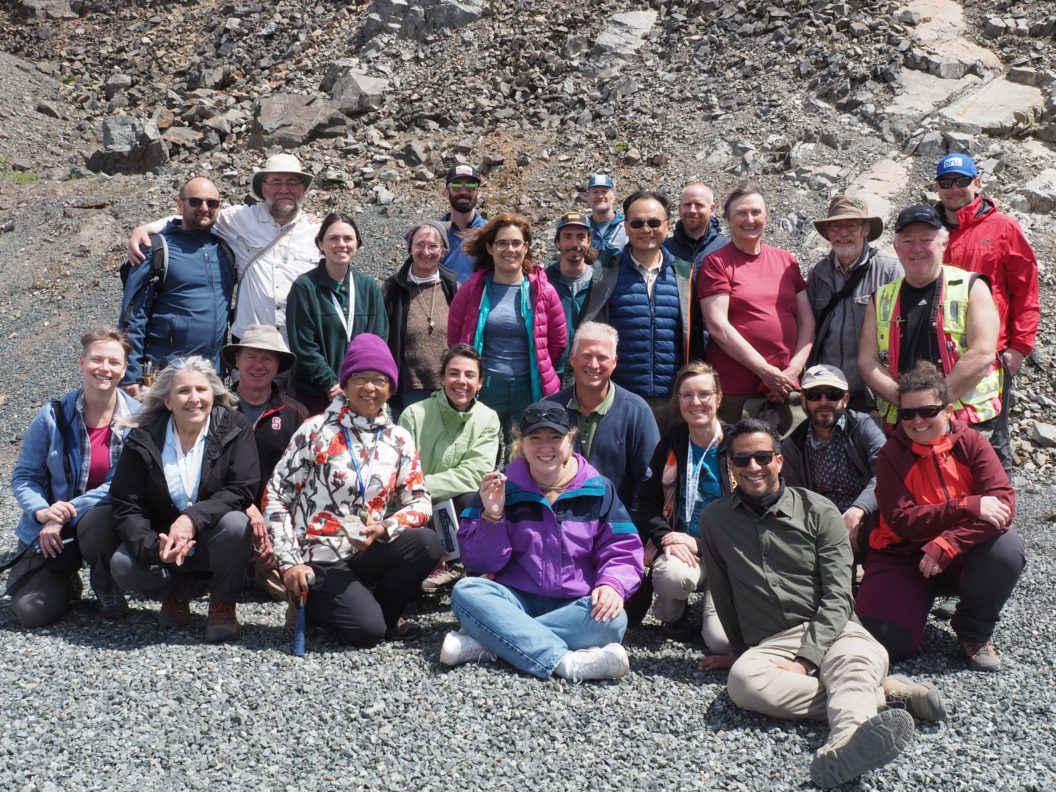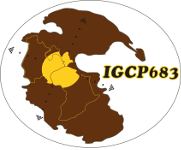Field Meetings
The purpose of the proposed IGCP project is to bring together researchers working on both sides of the northern Atlantic Ocean, to discuss connections among northwest Africa, eastern North America and Iberia during the Paleozoic. The project is primarily focused on the crustal fragments of Northwest African origin that are now located in eastern North America and Iberia, but also on fragments and traces of the microcontinent Avalonia that may exist in all three continents. Microcontinents Cadomia (in Iberia) and Meguma (in eastern North America) have been interpreted as having a (partial) NW African origin. Avalonia has Amazonian or West African, or perhaps Baltic, origin. Fragments of it now occupy large parts of eastern North America and Europe (including Iberia), and likely NW Africa (northern Morocco). Rock types, structures and natural resources may be correlated between northwest Africa, eastern North America and Iberia, and their origins will be much better understood if/when scientists who do research in these three areas would work together.

The purpose of our three main meetings is to bring together scientists who work in northwest Africa, eastern North America and Iberia, and compare and contrast all of the above among the three areas. It is our goal to have three meetings during the duration of the project, one in each of the three areas, to initiate and foster collaboration between these scientists, and to provide a venue to learn about each other’s research.
Past Fieldtrips: Canada – Halifax 2022
Date: Field trip May 19-23, 2022, general meeting May 15-18, 2022
Place: Field trip went around Nova Scotia, Canada, general meeting in Halifax, Canada
- SCOPE AND RESULTS OF MEETING:
During the Halifax2022 GAC-MAC-IAH-CNC-CSPG Joint Meeting (May 15-18):
- We convened a symposium: “Barr, S.M., Belkacim, S., Haissen, F., Kuiper, Y.D., Montero, P., Waldron, J.: «Pre-Atlantic geological connections among northwest Africa, western Europe, and eastern North America».

- We participated in the session titled “IUGS, Geoparks, and IGCP”, where we presented “Kuiper, Y.D., Barr, S.M., Haissen, F., Montero, P.G., Belkacim, S., 2022. The International Geoscience Programme (IGCP): an example and a fiftieth anniversary perspective.”

- We led a 5-day post-conference field trip as part of IGCP 683,
Itinerary of the fieldtrip:
DAY 1:
Stop 1-1. Dublin Shore – Goldenville Group-Halifax Group contact
Stop 1-2. Green Bay – Government Point and Green Harbour formations
Stop 1-3. Little Harbour – Shelburne dyke
Stop 1-4. Jordan Falls – cordierite porphyroblastic metapelite
Stop 1-5. Migmatite adjacent to the Barrington Passage Pluton
Stop 1-6. East Cape Forchu – White Rock Formation
DAY 2:
Stop 2-1. Bartletts Beach – oldest exposed Goldenville Group
Stop 2-2. High Head (weather permitting) – High Head member (Goldenville Group)
Stop 2-3. Cape St. Marys – Bear River & White Rock formations
Stop 2.4. Bear River exit ramp – Bear River Formation and sills
Stop 2.5. Tupper Lake Brook Formation, Goldenville Group
Stop 2-6. Hellgate Falls Formation, uppermost Halifax Group
Stop 2-7. North Alton Formation (optional) – Halifax Group
DAY 3:
Stop 3-1. Frog Lake quarry – Gamble Brook Formation (Frog Lake quarry)
Stop 3-2. McCallum Settlement area – Folly River Formation
Stop 3-3. Mount Thom area – Eight Mile Brook plutonic suite
Stop 3-4. Mount Thom quarry – Mount Thom Formation
Stop 3-5. Mount Ephraim – Mount Ephraim plutonic suite
Stop 3-6. Dalhousie Mountain area – Dalhousie Mountain Formation
Stop 3-7. Dalhousie Mountain Formation (optional)
Stop 3-8. Dalhousie Mountain area – Six Mile Brook Diorite
DAY 4:
Stop 4-1. Stirling Group – Point Michaud conglomerate
Stop 4-2. East Bay Hills Group – Morley Road Formation
Stop 4-3. Bengal Road – Canoe Brook Formation (Cambrian)
Stop 4-4. Main-à-Dieu Group – Louisburg Lighthouse
Stop 4-5. Main-à-Dieu Group –Bateston shoreline
DAY 5:
Stop 5-1. Bourinot Road – Bourinot Group
Stop 5-2. Quarry – Boisdale Hills (George River Metamorphic Suite).
Stop 5-3. Kellys Mountain Gneiss

Achievements of Meeting
- Our symposium included 11 oral presentations (of which 3 were visual), 5 posters and 2 virtual poster presentations.
- On the field trip, 25 geoscientists working in eastern North America, northwestern Africa, and western Europe participated in lively discussions on the geology, in particular of crustal blocks with northwest African origin that are now dispersed across the three continents. Fragments of at least three of these blocks may occur in Nova Scotia and were the focus of the field trip. Other areas (Avalonia in southern New Brunswick, the Penobscot Bay Inlier/Ganderia in coastal Maine, and Avalonia in southeastern New England) were high-lighted during evening “virtual” field trips. These and other virtual field trips, including areas covering the Anti-Atlas and Meseta of Morocco, the SW Iberian massif in southern Spain, and Avalonia in Newfoundland, were presented during the IGCP 683 symposium that preceded the field trip and/or made available for viewing and download on the IGCP 683 website, together with this guidebook. All are long-lasting valuable resources to those working on correlations between crustal blocks of eastern North America, northwestern Africa, and western Europe.
Outcome of Meeting
- Our meeting provided the foundation for future collaboration between scientists and students from Morocco, Canada, USA, Spain and Germany.
Field trip and Annual Meeting N 2:
Iberia May 9-14, 2023
Field trip and Annual Meeting N 2: Iberia May 9-14, 2023
